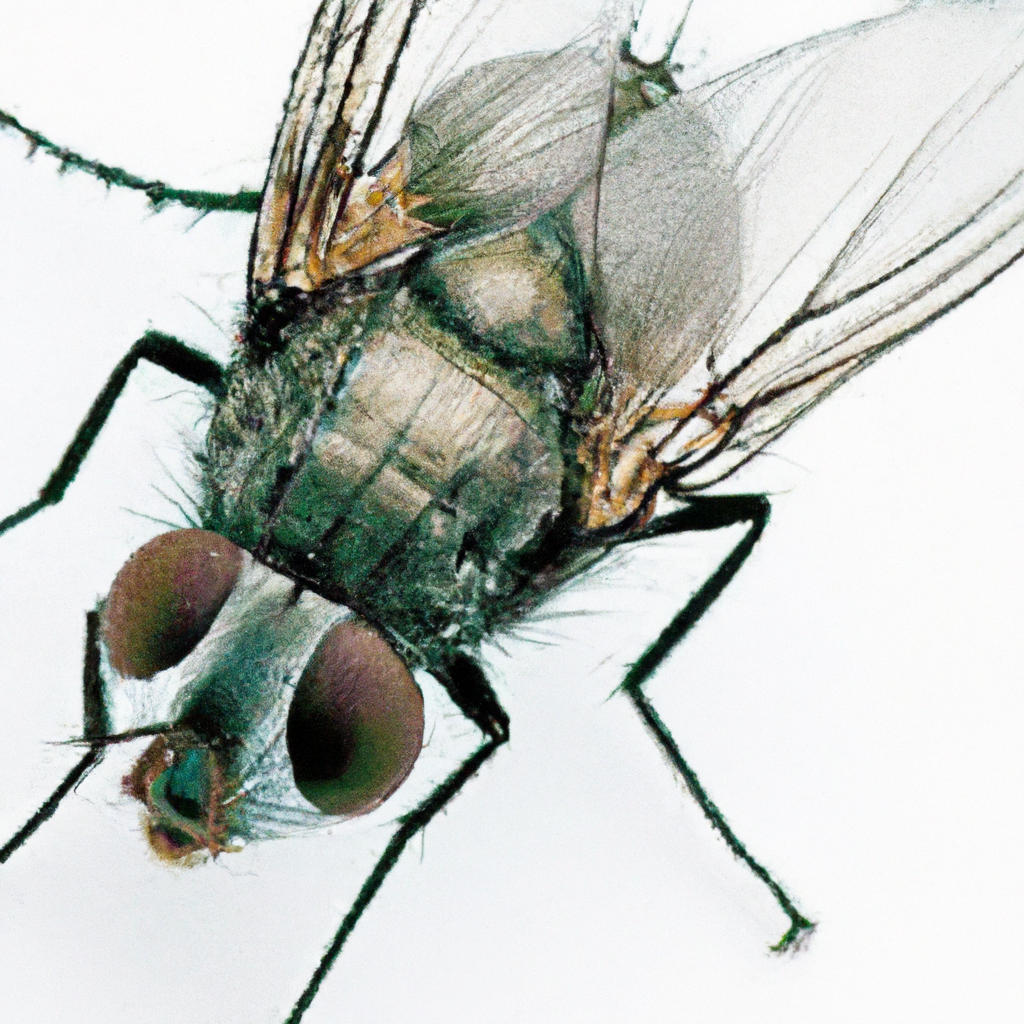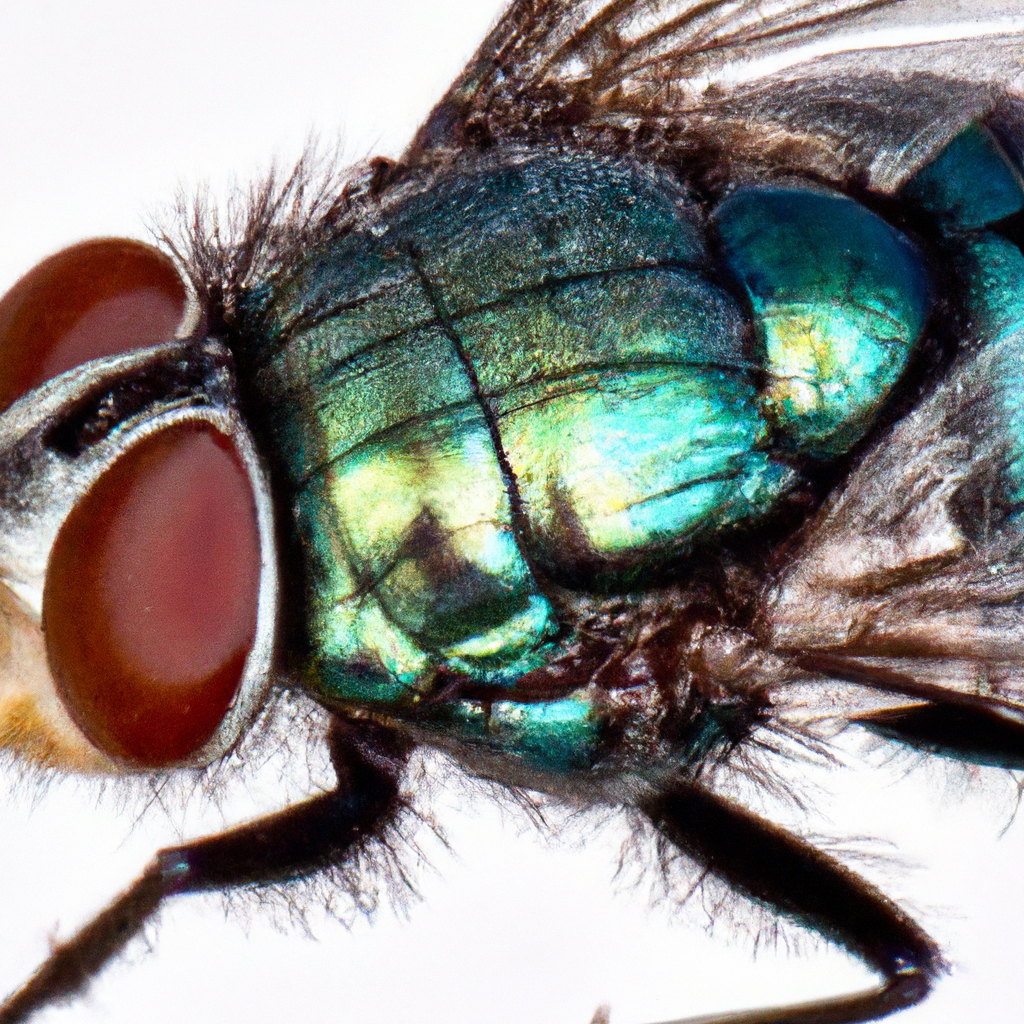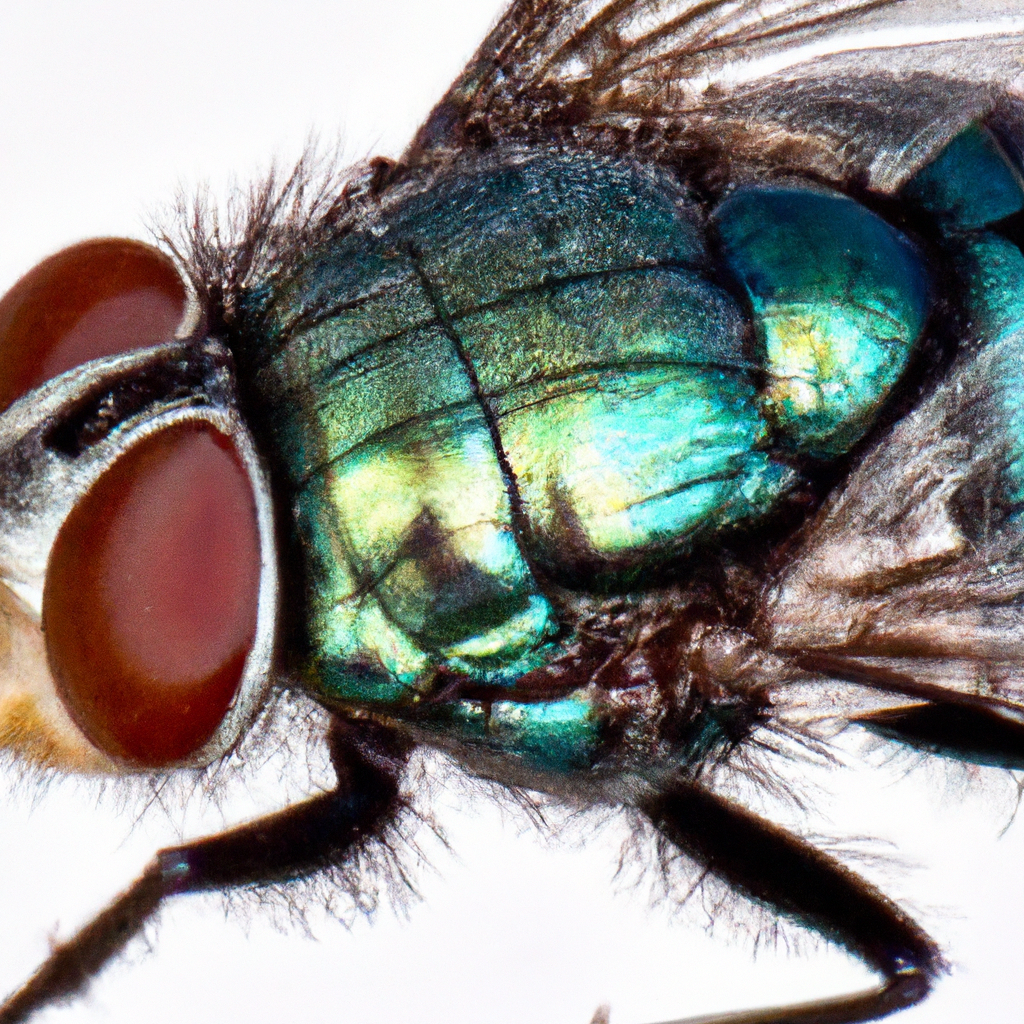So you’re curious about the most common flies? Well, look no further! In this article, we’ll take a closer look at those pesky little creatures that always seem to find their way into our homes, gardens, and picnics. Whether it’s the house fly buzzing around your kitchen or the fruit fly invading your fruit basket, we’ll help you become an expert at identifying these winged nuisances in no time. Get ready to uncover the secrets of the most common flies and learn how to deal with them like a pro!
Flies in the Diptera Order
Flies are a diverse group of insects belonging to the Diptera order. They are characterized by having a single pair of wings and undergo a complete metamorphosis during their lifecycle. Flies play both beneficial and harmful roles in the ecosystem. While some species are important pollinators, others can be nuisance pests or carriers of diseases. In this article, we will explore the characteristics, habitats, behaviors, lifecycles, damage and health risks, as well as prevention and control methods for the most common flies.

House Fly
The house fly (Musca domestica) is one of the most well-known and widespread flies in the world. It is approximately 6-7 millimeters long and has a grayish appearance with four dark stripes on its thorax. House flies are commonly found in and around human habitations, particularly in areas with access to food and waste materials.
House flies are known for their rapid reproduction and can complete their lifecycle within a week, depending on environmental conditions. They typically lay their eggs on decaying organic matter such as garbage, animal feces, or rotting food. The eggs hatch into larvae, commonly known as maggots, which feed on the decaying material. After a few days, the larvae transform into pupae and eventually emerge as adult flies.
While house flies themselves are not harmful, they can pose a risk to human health by spreading disease-causing pathogens. These flies are known to carry bacteria, viruses, and parasites, including those responsible for foodborne illnesses and intestinal infections. It is essential to prevent house fly infestations to avoid these health risks.
To prevent and control house flies, it is crucial to maintain good sanitation practices. This includes proper waste management, prompt removal of garbage, and regular cleaning of areas where food is prepared or stored. Additionally, using screens on windows and doors can help prevent flies from entering living spaces.
Fruit Fly
Fruit flies, also known as vinegar flies or pomace flies, belong to the Drosophilidae family. They are tiny flies, measuring around 3-4 millimeters in length, and are commonly found near fruits, vegetables, and fermenting substances. Fruit flies have a reddish-brown or tan coloration with bright red eyes.
These flies are attracted to overripe and decaying fruits, as well as the yeast produced during fermentation processes. Fruit flies are excellent at finding their food sources due to their acute sense of smell. Once they locate a suitable food supply, they lay their eggs on the surface. The eggs hatch into larvae, which feed on the fermenting material. The entire lifecycle of a fruit fly typically ranges from 10 to 14 days.
Although fruit flies are nuisances in homes, they do not pose significant health risks. However, they can contaminate food and produce by transferring bacteria and other microorganisms from their breeding sites. Fruit fly infestations are common in kitchens, grocery stores, and food processing facilities.
Preventing and controlling fruit flies involves eliminating their food sources and implementing proper sanitation measures. Storing fruits and vegetables in refrigerators or sealed containers can discourage fruit flies from laying their eggs. Regularly cleaning countertops, sinks, and garbage cans is also essential to remove any potential breeding sites.
Mosquito
Mosquitoes are well-known insects in the Culicidae family, with over 3,500 species worldwide. They are small, slender insects with long legs and a proboscis capable of piercing the skin to feed on blood. Mosquitoes are usually gray, black, or brown in color, and have a characteristic whining sound when they fly.
These flies are well-adapted to aquatic environments and often lay their eggs in stagnant water, such as ponds, puddles, or containers holding water. The eggs hatch into larvae, commonly known as wigglers, which live in the water and emerge to breathe through a specialized tube on the surface. After going through several molts, the larvae transform into pupae and eventually emerge as adult mosquitoes.
Mosquitoes are notorious for their biting behavior, as females require blood meals to develop their eggs. During their feeding process, mosquitoes can transmit various diseases to humans and animals, including malaria, dengue fever, Zika virus, and West Nile virus.
Preventing and controlling mosquitoes involves eliminating or treating stagnant water sources that serve as breeding grounds. This includes emptying containers, unclogging drains, and removing any objects that can collect water. In areas where mosquitoes are a significant problem, the use of insect repellents and mosquito nets can provide additional protection.
Horse Fly
Horse flies (Tabanidae family) are large, robust flies known for their painful bites. They are typically found in rural areas near bodies of water, such as marshes, lakes, or rivers. Horse flies are larger than most other flies, with a size ranging from 1 to 2 centimeters. They have large, strikingly colored eyes and a stout body.
These flies are active during the day and are attracted to warm-blooded animals, including humans, horses, and cattle. Female horse flies require a blood meal for reproduction, while males primarily feed on nectar. Horse fly bites can be painful and result in localized swelling and itching.
Horse flies undergo a complex lifecycle, with eggs deposited near water or damp soil. The larvae, known as nymphs, develop in these environments and feed on organic matter. After several molts, the larvae pupate and eventually emerge as adult flies.
Preventing and controlling horse flies can be challenging, especially in areas with abundant water sources. The use of insect repellents and protective clothing can help reduce bites. It is also advisable to keep doors and windows screened to prevent horse flies from entering homes.

Gnats
Gnats are small flies belonging to various families, including Sciaridae, Mycetophilidae, and Cecidomyiidae. They are often mistaken for fruit flies due to their similar appearance and behavior. Gnats are tiny, measuring around 2-3 millimeters long, and are typically gray or black in color.
Different species of gnats have specific habitats and behaviors. Fungus gnats, for example, are commonly found in indoor potted plants, where their larvae feed on decaying organic matter in the potting soil. Fruit flies, on the other hand, are attracted to overripe fruits and vegetables.
The lifecycle of gnats varies depending on the species. Generally, gnats lay their eggs near their respective food sources. The larvae, also known as maggots, feed on decomposing matter or plant roots. After the pupation stage, adult gnats emerge and continue the cycle.
While gnats are primarily nuisances, they can contaminate food and plants. In some cases, biting gnats can cause allergic reactions or transmit diseases. Preventing and controlling gnats involves identifying and eliminating their breeding sites. This may include proper watering and drainage of plants, regular cleaning of indoor areas, and disposing of any decomposing organic matter.
Blow Flies
Blow flies, also known as bottle flies or bluebottles, are a type of large fly in the Calliphoridae family. They are characterized by their metallic blue or green coloration, although some species can be black. Blow flies are commonly found in urban areas, particularly around garbage and decaying animal matter.
These flies play a vital role in decomposition processes, as they feed on carrion and assist in breaking down organic matter. Blow flies also serve as important forensic indicators by providing valuable information to investigators in crime scenes. Additionally, some species of blow flies are known to lay their eggs in open wounds, which can lead to serious health complications.
The lifecycle of blow flies begins with the female laying eggs on suitable substrates, such as decaying matter or wounds. The eggs hatch into larvae, commonly referred to as maggots, which feed on the organic material. After going through several larval stages, the maggots bury themselves to pupate. The adult flies emerge from the pupae and continue the cycle.
Preventing and controlling blow flies involves proper waste management and sanitation practices. Ensuring that garbage is properly disposed of, and cleaning up any decaying organic matter can help reduce blow fly populations. In forensic settings, blow flies are valuable indicators for estimating the post-mortem interval and should be carefully studied and documented.
Phorid Fly
Phorid flies, also known as humpbacked flies or scuttle flies, belong to the Phoridae family. They are small flies measuring around 2-3 millimeters in length and are typically dark brown or black in color. Phorid flies are commonly found in moist environments, such as drains, sewage systems, and rotting organic matter.
These flies have a unique way of walking, characterized by short, rapid steps and a hunched appearance. They are known for their erratic flying patterns and tend to run across surfaces instead of flying straight. Phorid flies are attracted to decaying organic matter and can lay their eggs in various substrates, such as garbage, animal feces, or damp soil.
The lifecycle of phorid flies involves the female depositing eggs in a suitable substrate. The eggs hatch into larvae, which feed on the decaying matter. After the larval stage, the maggots pupate and eventually emerge as adult flies.
Phorid flies can be a nuisance in households and can contaminate food sources. They are also known to carry and transmit pathogens, making them a potential health risk. Preventing and controlling phorid flies involves proper sanitation and moisture control. Regular cleaning of drains, proper waste disposal, and keeping food covered can help reduce their populations.
Drain Fly
Drain flies, also known as moth flies or sewer flies, are small flies in the Psychodidae family. They are typically around 2-5 millimeters long and have a fuzzy appearance. Drain flies are commonly found in damp areas near drains, septic tanks, and sewage systems.
These flies are attracted to organic matter and thrive in environments with moisture and decaying materials. Drain flies lay their eggs on damp surfaces, such as the edges of drains and pipes. The eggs hatch into larvae, which feed on the organic material found in drains and sewage systems. After going through the pupation stage, adult drain flies emerge.
While drain flies themselves do not transmit diseases, their presence can indicate underlying moisture and sanitation issues. Large populations of drain flies can also be a nuisance, especially if they accumulate in large numbers near drains and sinks.
Preventing and controlling drain flies involves identifying and eliminating their breeding sites. Regularly cleaning drains and ensuring proper drainage can reduce their populations. In cases of severe infestations, professional pest control services may be required to address the underlying issues.
Cluster Fly
Cluster flies, also known as attic flies or loft flies, are a type of large fly in the Polleniidae family. They are similar in appearance to house flies but are slightly larger, measuring around 8-10 millimeters in length. Cluster flies are commonly found in rural areas during the late summer and fall.
These flies are known for their habit of forming large clusters, particularly in attics, wall voids, or other protected areas of buildings. Cluster flies typically hibernate in these spaces during the winter months, emerging as adults during warmer seasons. Unlike house flies, cluster flies do not breed indoors but lay their eggs in the soil, where the larvae develop as parasitic organisms on earthworms.
While cluster flies are generally harmless to humans, their presence in large numbers can be a nuisance, especially when they enter living spaces. The buzzing sound and large clusters of flies in attics can be unsettling for homeowners.
Preventing and controlling cluster flies involves minimizing entry points into buildings and sealing cracks and openings. Regularly cleaning and maintaining attics and other protected spaces can also reduce their populations. If cluster flies become a significant issue, professional pest control services may be necessary.
Flesh Flies
Flesh flies, known scientifically as the Sarcophagidae family, are medium-sized flies with a gray or black appearance. They are typically larger than house flies, with a size ranging from 8-12 millimeters in length. Flesh flies are commonly found near carcasses, decaying organic matter, or compost piles.
These flies play an important role in the ecosystem by assisting in the decomposition process. They are attracted to open wounds and can lay their eggs in decaying flesh. Flesh fly larvae, also known as maggots, feed on the decomposing matter and play a crucial role in breaking it down. The maggots eventually transform into pupae and emerge as adult flesh flies.
Flesh flies are not known to transmit diseases to humans, but their presence can be an indicator of underlying sanitation issues or carcasses in the vicinity. Preventing and controlling flesh flies involves proper waste management and removal of animal carcasses. Regularly cleaning outdoor areas and keeping garbage securely covered can help reduce flesh fly populations.
In conclusion, flies in the Diptera order come in various species, each with its own distinct characteristics, habitats, behaviors, lifecycles, and potential risks. It is important to understand these factors to effectively prevent and control fly infestations. By implementing proper sanitation measures, identifying and eliminating breeding sites, and utilizing appropriate pest control methods, you can minimize the presence of flies and reduce their impact on human health and comfort. Remember to consult with professionals if you are experiencing severe infestations or require specialized assistance.




